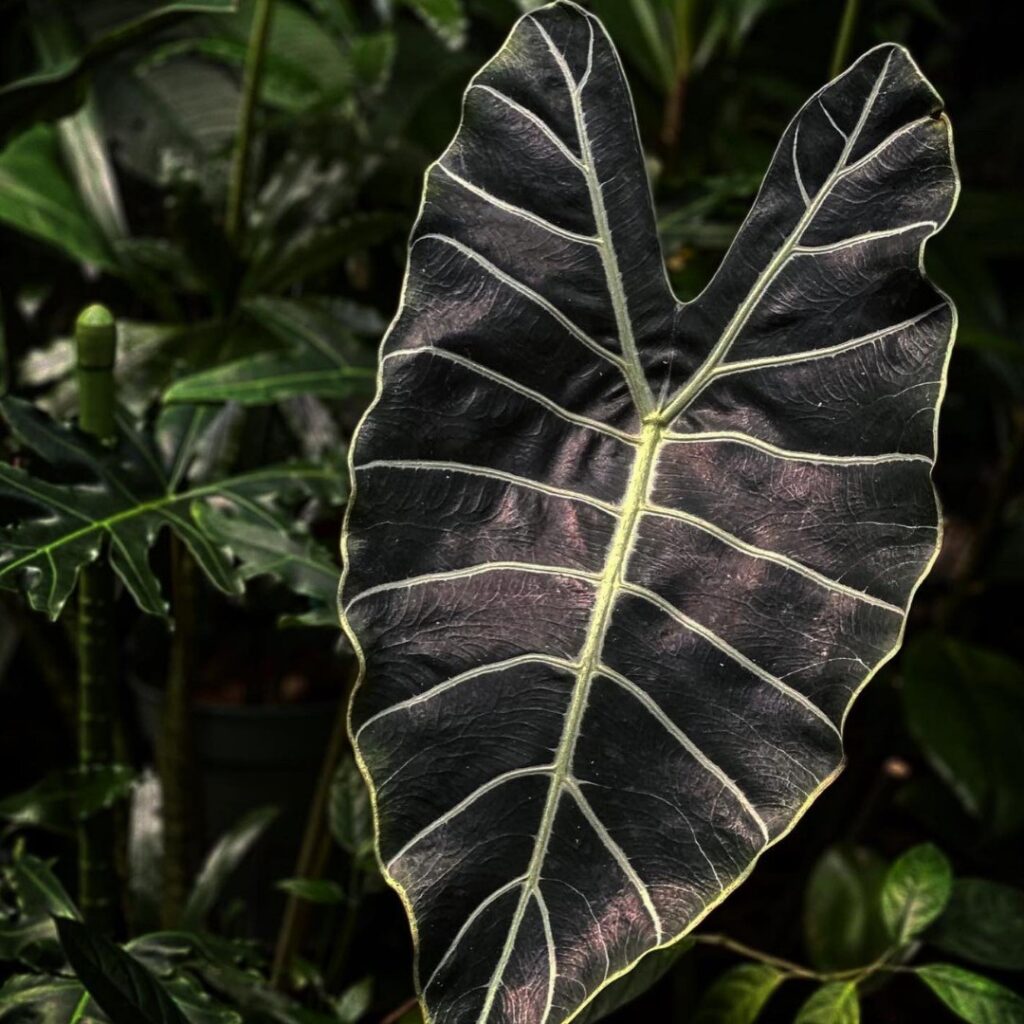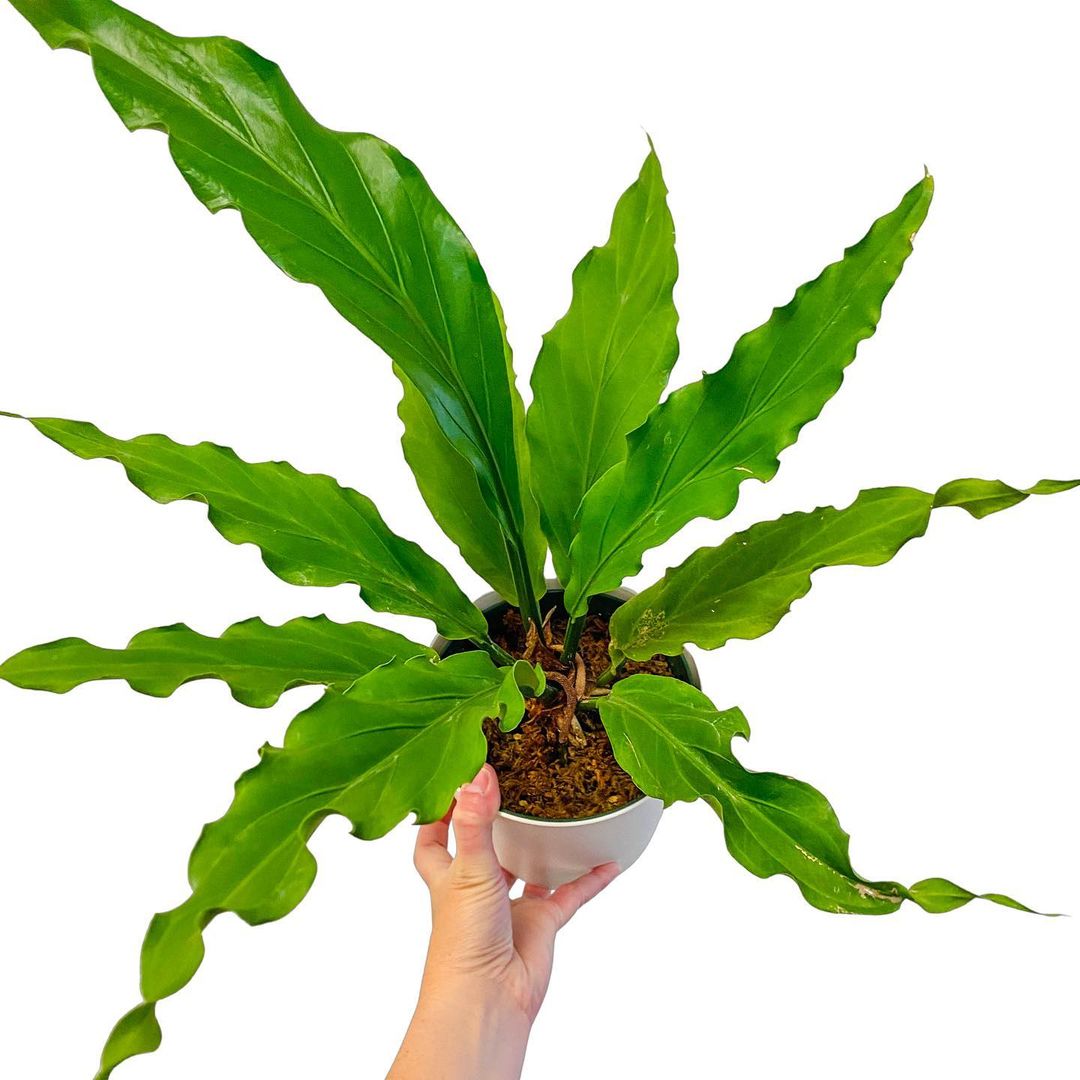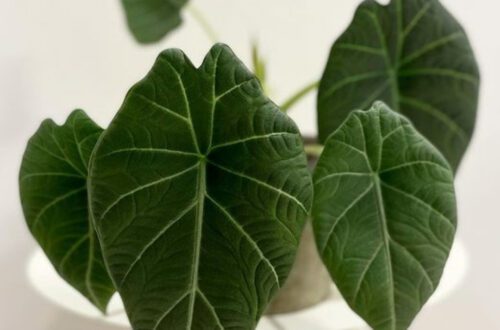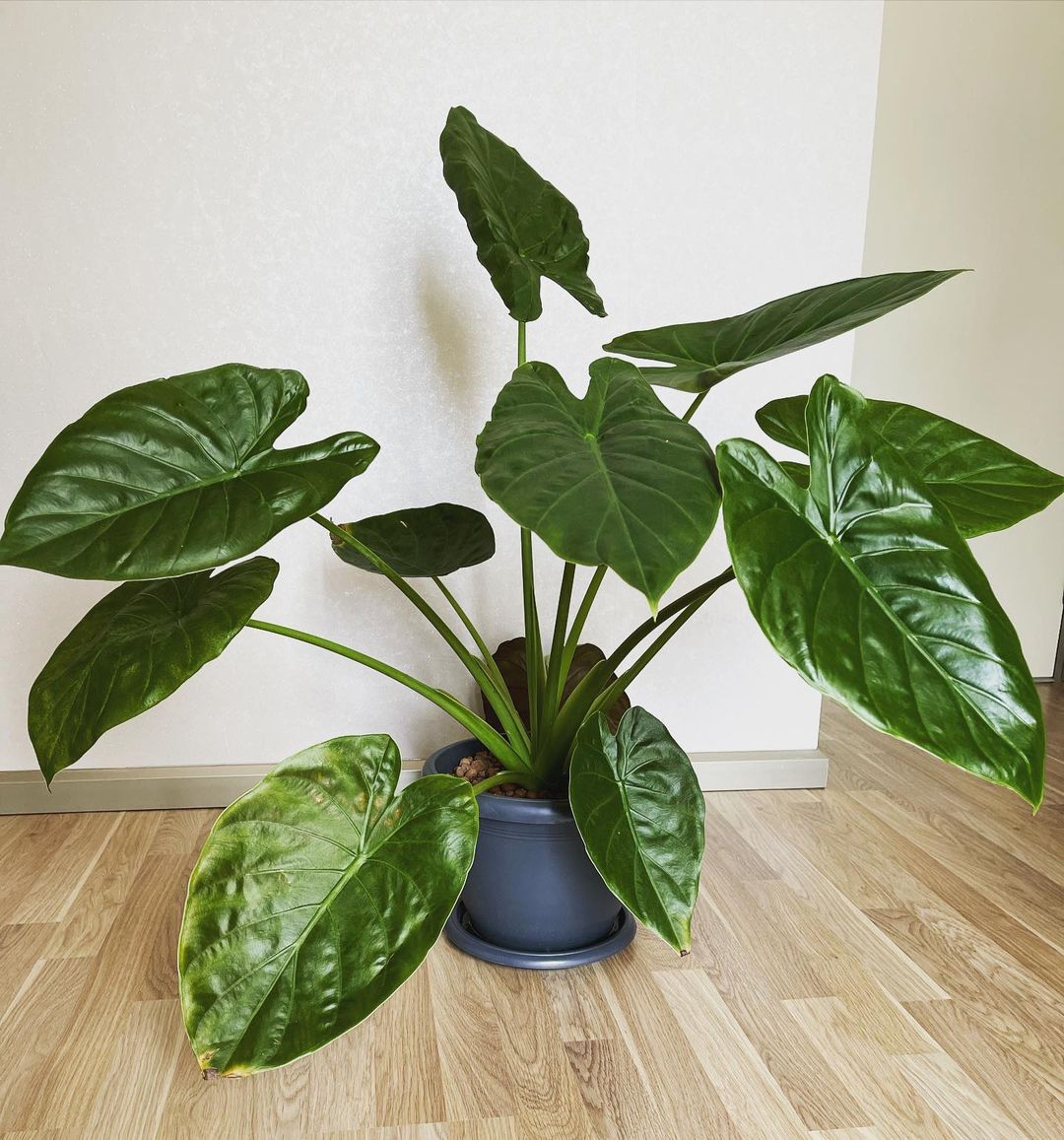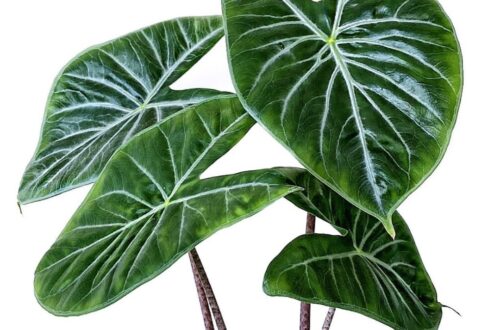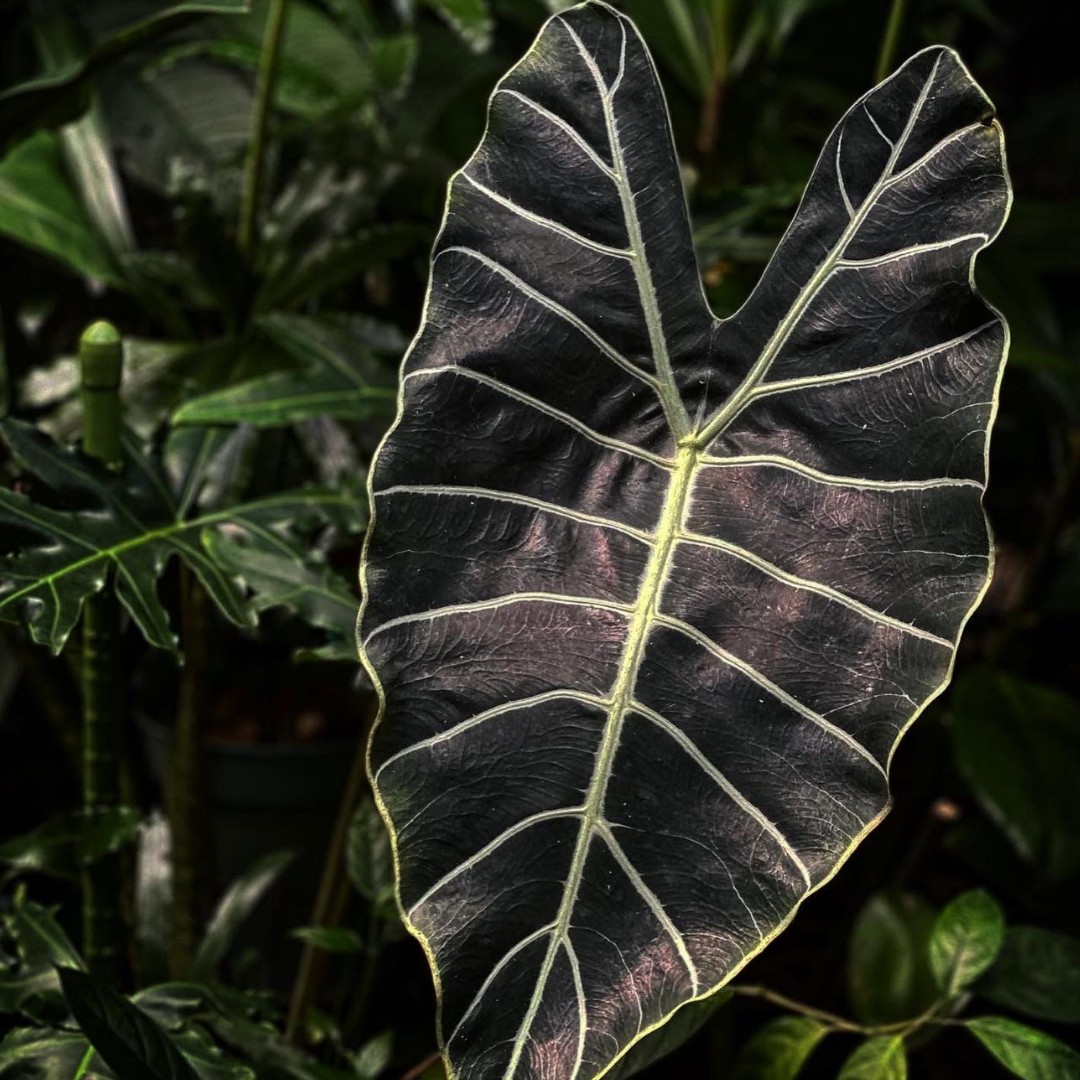
Alocasia Longiloba
Welcome to our guide to Alocasia Longiloba care, covering all you need to know about care and propagation…
The key to caring for this plant is to give it moist soil, bright indirect light and constant high humidity.
Alocasia Longiloba Care Summary
| Light needs: | Bright indirect sunlight. |
| Watering needs: | Keep them moist but not soaking wet. Check the soil once a week. |
| Fertilizer: | A balanced feed every 3 or 4 weeks in the warmer months. |
| Soil: | Rich and well draining (see: Alocasia Soil). |
| Humidity: | 60%-70%. |
| Temperature: | 18-25ºC (64-77ºF). |
| Where to buy: | Try our list of Rare Plant Shops or Etsy. |
| Common issues: | Both over and under watering. |
Introduction
The Alocasia Longiloba has big over sized leaves and clear indented veins. The leaves are absolutely stunning to be honest, I’m in love with this plant!
See also: Alocasia Sarian, Alocasia Azlanii, Alocasia Regal Shields, Alocasia Silver Dragon, Alocasia Maharani, Alocasia Cuprea Care, Alocasia Chantrieri, Alocasia Dark Star, Alocasia Ivory Coast, Alocasia Portora, Variegated Alocasia.
Tip: we recommend Etsy for buying plants. Look for the best rated seller you can, and try to buy as close to your home as possible so the plant does not travel too far.
A note about affiliate links: when you buy a plant, pots, soil, or other goods through links on this article we sometimes earn a commission. It doesn’t cost you anything, but it really helps us out if you do use them. Thanks a lot! An example of this is if you buy a plant on Etsy using this link. Read our privacy policy for more information. Thanks again.
Light Needs
Give it plenty of indirect sunlight, the more the better, but no direct un which can burn it.
How Often To Water Alocasia Longiloba
Keep them moist but not soaking wet. Check the soil once a week, and give it water if the top 25% of the soil is dry. Make sure all the water drain through it before you put it back in it’s external container or saucer, so the bottom does not get too wet.
Tip: keep them moist but not soaking wet. I would them weekly and water if the top half of the soil is dry. Tip out any excess water afterwards to avoid water logging so you keep them moist without drenching.
Fertilizer
Use a balanced feed every 3 or 4 weeks in the warmer months. Start off really well diluted and gradually increase the dosage.
Soil
A rich and well draining soil is essential, you can make a mix with orchid bark, perlite and good quality potting compost. Don’t use normal potting compost as it will be too heavy and wet for the roots. For more on which soil to buy or how to make your own see our guide: Alocasia Soil.
When to Repot Alocasia Longiloba
Repot them when they get root bound. Make sure you check the roots at least once a year as you can get root rot when they get crowded as water cannot drain away easily.
Humidity
Aim for 60%-70%, these plants really love a humid environment. If your plant is suffering from a lack of humidity, put a plastic bag around the plant, about as tall as the plant, and leave the bag open so air can circulate but still increase the humidity.
Tip: Keep them humid, at least 60% in the day and they’ll be ok with a bit less at night. You can buy a humidity meter (affiliate link) to keep an eye on maximum and minimum levels.
Temperature
18-25ºC (64-77ºF) is good daytime temperature, keep them above 10ºC (50ºF) at night and in the winter. Keep them away from cold drafts too.
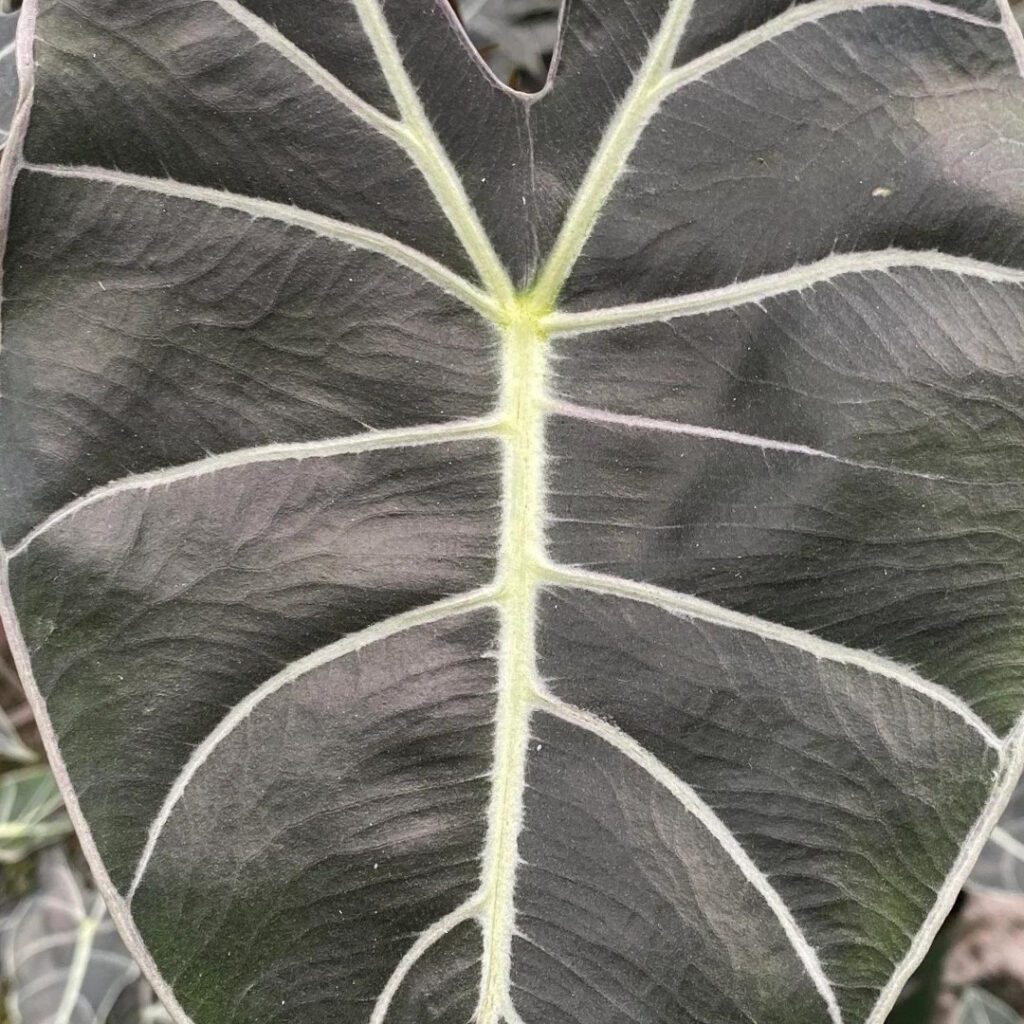
How to Propagate Alocasia Longiloba
They should be propagated by division a the base once the plant is big enough to warrant it and there are clear opportunities to separate out smaller plants. Take the lant out of it’s pot and divide them, being careful not to damage the roots when you do this.
alocasia longiloba size
They can grow to about a meter (approx 6 feet) if given good care.
Alocasia Longiloba USDA Zone
Zones 10-11.
Alocasia Longiloba Leaves Turning Yellow
Stress or irregular watering will show on the leaves, the most common cause of yellowing is over watering. It can also be due to under watering too. Make sure you check the soil each week, but are only watering it if needed.
Alocasia Watsoniana Vs Longiloba
There are a few different types of longiloba. The alocasia longiloba watsoniana has much rounded leaves and the veins are distinctly silver.
Alocasia Longiloba Vs Polly
They are fairly similar plants, but you tell them apart as the polly has serrated/jagged edges to it’s leaves, the longiloba does not.
Where To Buy
Try our list of Rare Plant Shops. Or Etsy.
FAQs and Common Problems
Both over and under watering are common problems – they must not sit in soggy soil but also should not dry out. Check the soil once or twice a week with your finger and you should be ok.
Sometimes when alocasias are juveniles they shed leaves shed a new one grows, so don’t be too alarmed if you see leaves falling off when a new one grows. If I see a yellowing leaf on one of my alocasias and it’s the oldest one only, I don’t worry too much, it means there is new growth coming.
Is It Toxic To Cats?
It is toxic to dogs and cats if eaten, it can cause vomiting and irritation, so seek vets advice.
Additional Resources
Links:
- More info on the Wikipedia page.
- More info on the Kew Gardens plant page.
- More info on the RHS plant page.
- More info on the Exotic Rainforest plant page.
Other Articles You Might Like
There you have it, here ends our guide to this beautiful plant. You might also like our other articles:
Alocasia Sarian, Alocasia Regal Shields, Alocasia Silver Dragon, Alocasia Maharani, Alocasia Cuprea Care.
Please follow us on Instagram and Pinterest for regular plant updates and occasional plant giveaways.
